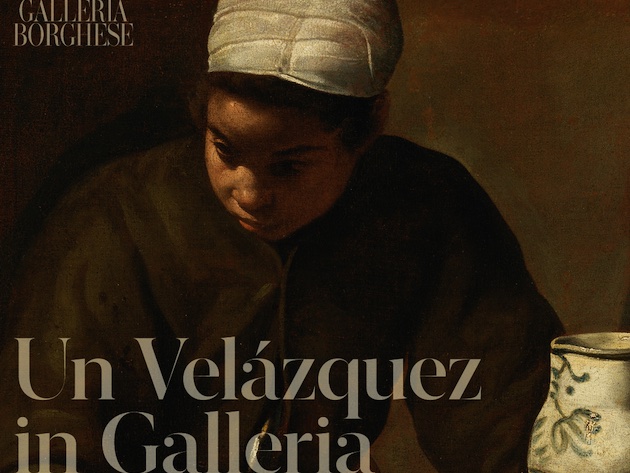
The Borghese Gallery presents the exhibition of the painting Woman in the Kitchen with Dinner at Emmaus – the first known work by Diego Velázquez (1599-1660) from the permanent collection of the National Gallery of Ireland – and displayed in the Sala del Sileno which houses the paintings of Michelangelo Merisi da Caravaggio.
The exhibition therefore, thanks to the choice of layout, automatically compares Velázquez's painting and the works of Caravaggio present in the room, revealing new perspectives in the context of an intense cultural dialogue between the work of two undisputed masters of the Baroque period. Furthermore, Velázquez, as remembered in the exhibition, is an international artist - who visited Rome twice - and just like Rubens, he had a special relationship with this city and Italy. In fact, the great Spanish painter was part of that large group of foreign artists who were in the eternal city to draw teaching and inspiration from the masterpieces present.
Painted around 1618-1620 when Velázquez had recently left the workshop of Francisco Pacheco, a Sevillian painter whose daughter Juana he married, the Woman in the Kitchen with Dinner at Emmaus, falls within the genre of bodegón, a Spanish genre of painting that portrayed people from humbler social conditions, often in the kitchen or near poor foods and objects. At the centre of the painting is a young maid busy in the kitchen, who, with a dreamy expression, seems to have just finished washing the dishes and tidying up after a meal, as can be seen from the presence of the jug and the bowls overturned to drain and the cloth white in the foreground. The still life representing the objects is painted with great realism and liveliness, the light hits the ceramic jugs and other everyday objects. In the background on the left, almost like a painting within a painting, you can see from a window a scene with the evangelical episode of the Dinner at Emmaus by Caravaggio, which was hidden by repaintings and re-emerged thanks to a restoration in 1933.
Although Velázquez's painting was executed over a decade before his Italian stay, one can easily imagine that Caravaggio's works had arrived in Spain by means of some copies, which were then circulating in large quantities, and that the Spanish artist could having seen a replica of the Dinner at Emmaus.
In any case, it is certain that from the beginning his pictorial debuts were greatly influenced by Merisi, both artists also painted the slums of the cities, the streets, the taverns and the inns, inserting in a revolutionary way the theme of the sacred within of humble and everyday settings.
Photo credits: official poster of the Borghese Gallery
Informations
dal 26 marzo al 23 giugno 2024
dal martedì alla domenica dalle ore 9.00 alle 19.00
Ultimo ingresso alle ore 17.45
 Condividi
Condividi











































